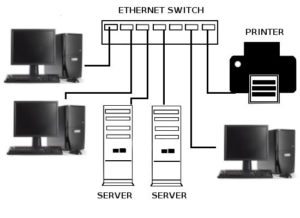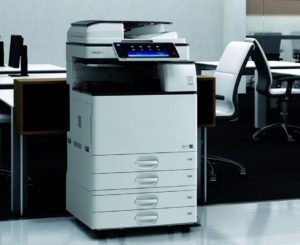When it comes setting up your printer to your computer, you have a variety of options. You have the choice to set it up as a local printer or network printer depending on the needs of your company. So what is the difference between local and network printers?
Local vs Network Printers: The Differences
A local printer is one which is directly connected to a specific computer via USB cable. This printer is only accessible from that particular workstation and therefore, can only service one computer at a time. Most printers these days will autmoaticaly install the printers’ software onto your computer the first time it is connected via USB. This makes it very easy to setup and start using right away out of the box.

A network printer, on the other hand, is part of a workgroup or network of computers that can all access the same printers at the same time. These printers or copiers are connected to the networks server via ethernet cable. Wireless printers and copiers do not have to have a physical connection with an ethernet cable to the network. They can also be connected to the network wirelessly and accessed by the workstations.
There are certain businesses and work environments that are better served by the use of local printers, allowing specific employees direct access to a printer with no queue. In other instances though, network printers serve a better purpose because the printing needs of multiple employees can be more efficiently met with one printer.
Pros & Cons to a Local Printer
As mentioned, local printers have the benefit of ensuring that employees with large printing needs have reliable access to a printer. Localized printers also improve the efficiency of project workflow. When a local printer is used to print out pieces for a project, it is easy to immediately see if the printed materials are accurate. If there is a problem, it is identified quickly and can be corrected in a timely manner.
Local printers do come with downsides however, and a great deal of it has to do with costs. When you have multiple users that need their own dedicated printer, costs can skyrocket quickly. Not only is there the cost involved with buying and maintaining multiple printers, but there is the cost of toner and paper for each printer. It can also decrease productivity in the event a user’s printer goes down, they cannot simply reroute a print project to another printer.
Pros & Cons to a Network Printer
There are a wide variety of benefits to using network printers in your office. First and foremost, network printers offer flexibility and efficiency to all employees in the office. Network printers can operate with multiple platforms (Windows, Mac, Linux, etc.) and a variety of different printer types (desktop, multifuction, copier, etc.).

This means that users throughout the office can access printers on the network regardless of the platform in use on their device. Additionally, network printing solutions offer employees a variety of print options when various types of printers are connected to the network.
Of course, one of the biggest benefits to network printers is the cost savings involved. Rather than buying a printer and supplies for each workstation, all costs are confined to the few network printers serving the entire office.
Downsides to a newtwork printer is the setup. Depending how complex your network is will determine how difficult your printer setup will be. If you have an onsite IT department this is usually not a problem as they will be able to take care of everything. Another downside, with multiple users capable of accessing the same printers, projects can be delayed when the printer is already in use. Additionally, if the network goes down then printers become inaccessible.
Determining whether or not your business needs local or network printers depends on your offices business structure. Our dedicated printer experts would be more than happy to consult with you and determine the best solution for your office. Contact us today to set an appointment up!

